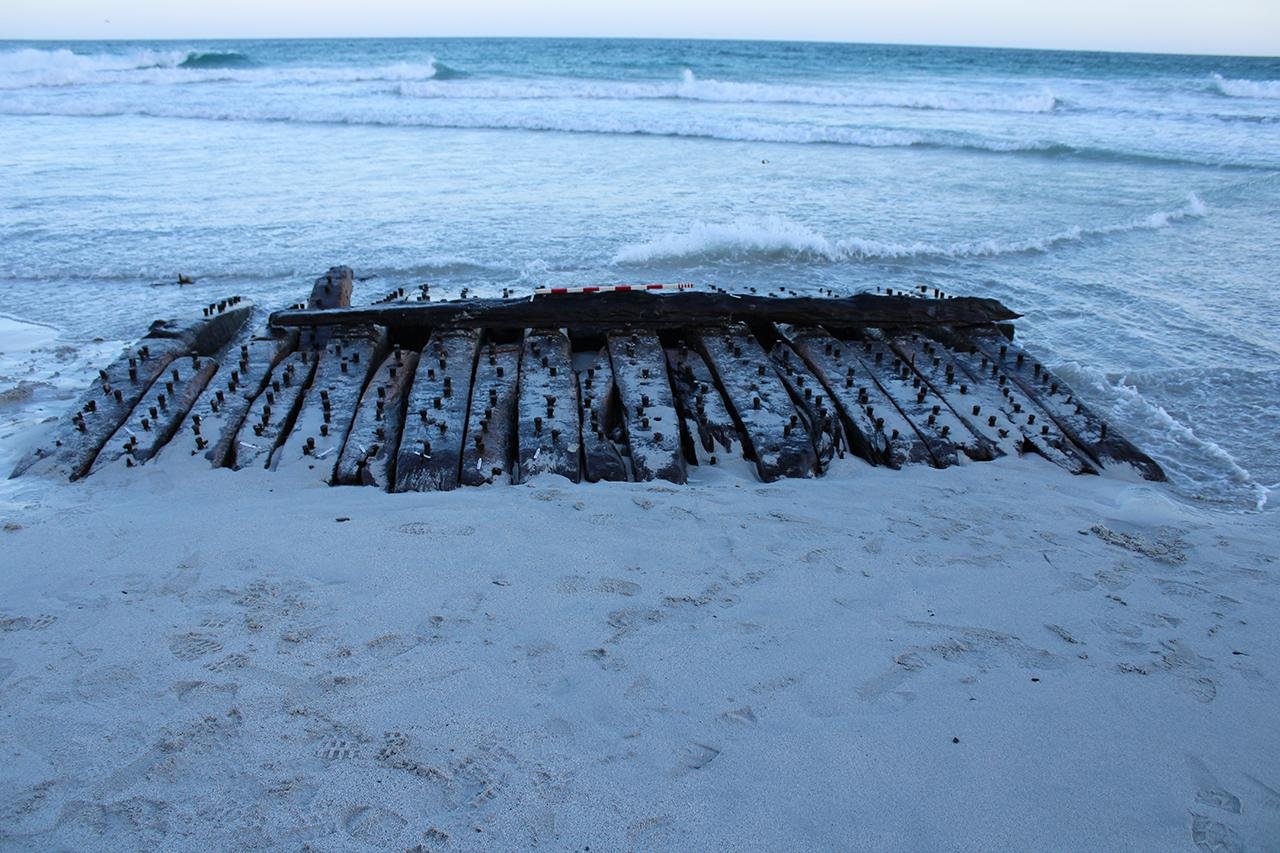A collaborative work carried out by archaeologists and the community of Sanday, Orkney, has finally identified a strange wreck uncovered in February 2024 as the Earl of Chatham—a former Royal Navy frigate with its former name HMS Hind. The wreckage had remained buried under the intertidal sands of the Bay of Lopness for more than two centuries but was revealed due to extreme storms and shifting wind patterns linked to climate change.
 The 250 year old remains of the Sanday Wreck, the idenтιтy of which is understood to be Earl of Chatham. Credit: WesSєx Archaeology
The 250 year old remains of the Sanday Wreck, the idenтιтy of which is understood to be Earl of Chatham. Credit: WesSєx Archaeology
Originally ordered as HMS Hind, a 24-gun sixth-rate frigate, the vessel saw service in Britain’s Royal Navy during some of the most defining battles of the 18th century, such as during the sieges of Louisbourg and Quebec in the Seven Years’ War, and naval actions in the American Revolutionary War. Due to its speed and versatility, Hind was used for combat and convoy escort service prior to being decommissioned and sold off in 1784.
Purchased by merchant Theophilus Pritzler, the vessel was renamed the Earl of Chatham and repurposed as a whaler. This type of transition from warship to whaler was not uncommon; the Royal Navy’s long-lasting vessels were well adapted to Arctic expeditions. Under Captain William Brown’s command, the vessel worked through four successful whaling seasons hunting Bowhead whales, returning with over 350 tons of blubber. But in 1788, the vessel ran aground off Sanday under new captaincy by an individual named Paterson. Remarkably, all 56 crew members aboard the vessel survived.
 The timbers were first uncovered last year, freed from the seabed by a powerful storm. Credit: WesSєx Archaeology
The timbers were first uncovered last year, freed from the seabed by a powerful storm. Credit: WesSєx Archaeology
The wreck was rediscovered after being exposed by natural coastal erosion. This created immediate community interest and sparked a scientific investigation. A dendrochronological examination by the firm Dendrochronicle confirmed the ship was built with timbers originating in southern and south-western England during the period from 1748 to the 1760s. This key clue allowed a group of 20 local researchers—operating in collaboration with WesSєx Archaeology and supported by the Sanday Heritage Center, Orkney Archaeology Society, and Sanday Heritage Group—to dive into naval records and historic archives.
The Sanday Wreck by WesSєx Archaeology on Sketchfab
A methodical process of elimination, analyzing timber origin, ship dimensions, construction techniques, and service history, resulted in the team concluding that the ship could only be the Earl of Chatham. Naval records in the National Archives and the National Maritime Museum helped to solidify the ship’s dual idenтιтies as both the HMS Hind and later as a commercial whaling vessel.
Ben Saunders, Senior Marine Archaeologist at WesSєx Archaeology, credited the breakthrough to the community’s dedication: “It is thanks to our dedicated team of community researchers and the evidence they have gathered that we have been able to identify the Sanday Wreck with a reasonable degree of confidence. Throughout this project, we have learned so much about the wreck, but also about the community in Sanday in the 1780s. Sanday was infamous for shipwrecks at the time, called ‘the cradle of shipwrecks in Scotland’, but the community was equally well-known for its hospitality, as it looked after sailors who fell afoul of the area’s stormy seas.”
In fact, local newspapers such as the Aberdeen Journal of 1788 describe the wreck of the Earl of Chatham in detail, praising the fact that the local response safely brought all the sailors ashore. Sanday was well-known across northern Europe as a place of wrecks, snaring Danish and Swedish East Indiamen, Dutch warships, emigrant ships headed from Germany for a new life in America, and dozens of smaller trading vessels.
Now, the preserved timbers of the Earl of Chatham are stored in a freshwater conservation tank at the Sanday Heritage Center, where the public can find out more about this remarkable find and the island’s maritime heritage.





